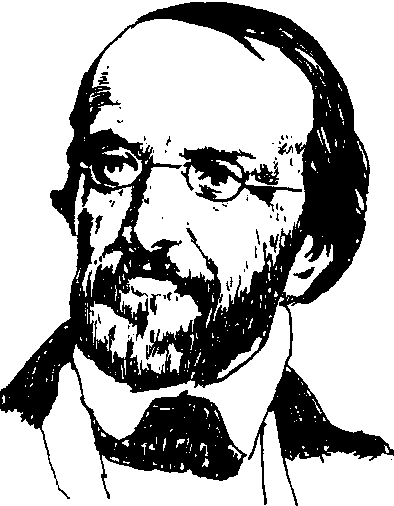狄利希雷1805—1859DilixiLei,Dirichlet,P. G. L.
德国数学家。从小爱好数学,1822年到巴黎入法兰西学院和巴黎理学院学习。1823年被拿破仑时代的英雄、在国民议会中很有声望的费伊聘为家庭教师,狄利希雷因此接触到许多学者名流。在他第一篇数学论文中, 他运用代数数论的方法处理x5+y5=Az5,进而证明了费马方程xn+yn=zn当n=5时无整数解,是对费马大定理问题的一次突破。回国后被任命为柏林大学教授。自1828年后27年里,他一直在柏林大学教学、研究。他在数论方面关于费马大定理他又给出n=14无整数解的证明,探讨了二次型、多项式的素因子、二次和双二次互反律等问题。1837年, 他发表第一篇解析数论论文,提出著名的狄利希雷定理,其中用到的级数后被称为狄利希雷级数。1863年狄利希雷遗著被他的好友和学生戴德金整理出版,这本名为《数论讲义》的书叙述了作者在数论方面大量的研究成果。在分析学方面, 狄利希雷深入讨论了傅立叶级数收敛问题, 发展了傅立叶级数理论。提出了新的(单值)函数定义——此定义一直沿用至今。狄利希雷修改了高斯关于位函数论的一个原理,引入狄利希雷原理。提出了微分方程边界值问题, 在数学物理领域中起着重要作用。1855年高斯去世。格丁根大学决定聘请狄利希雷接替高斯的职务。他是普鲁士科学院院士,英国皇家学会会员。

狄利希雷是高斯的研究者和崇拜者, 他把高斯深奥的方法变成易于理解的东西,他的《数论讲义》至今仍是对高斯数论研究最易懂的介绍。有一则讲述狄利希雷和他伟大的老师高斯的动人故事。在1849年7月16日, 高斯得博士学位五十周年。高斯高兴地参加在格丁根为他举办的庆祝会。当会进行到某一程序时,高斯准备用他的《算术研究》的一张原稿点烟。在庆祝会上的狄利希雷像见到犯了渎圣罪一般吃了一惊。他立即冒失地从高斯手里挽救了这页手稿,并一生珍藏它。狄利希雷死后, 人们从他的论文中间找到了那张高斯的原稿。